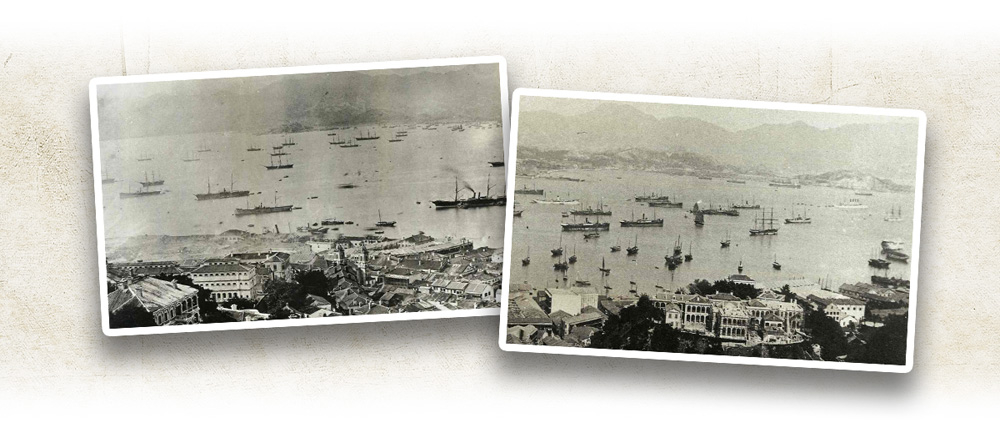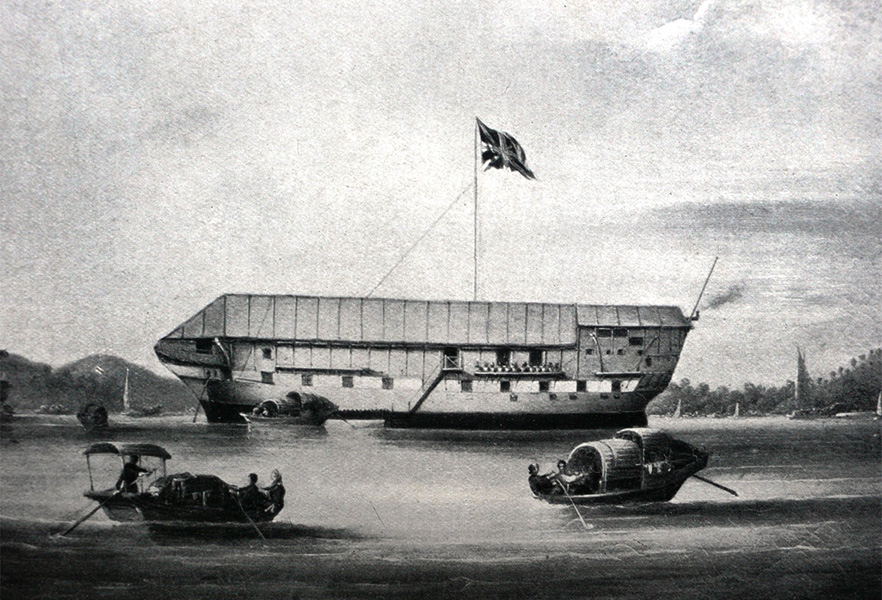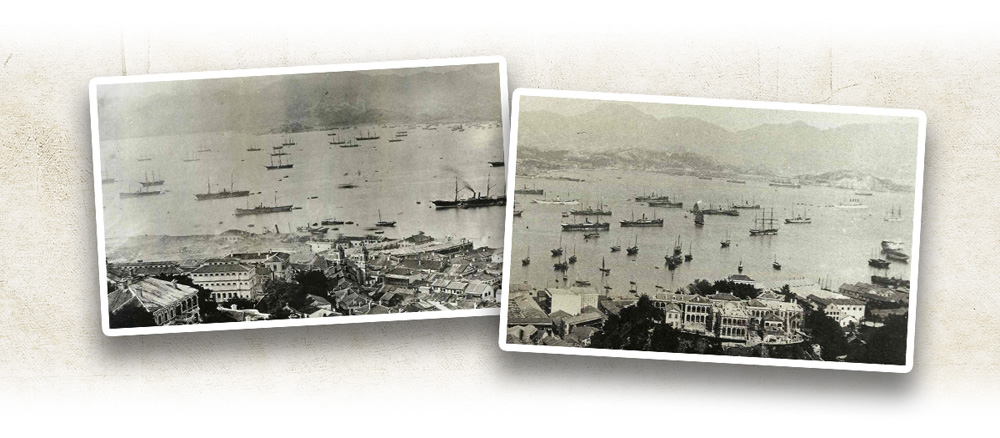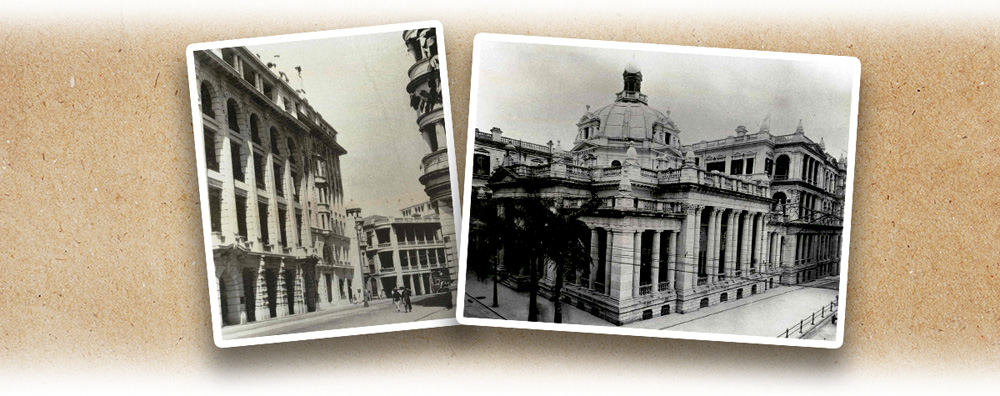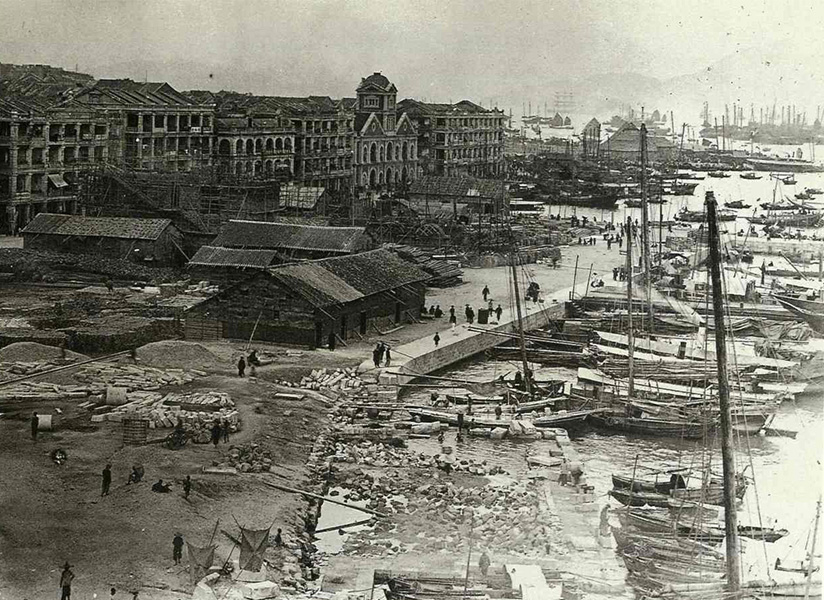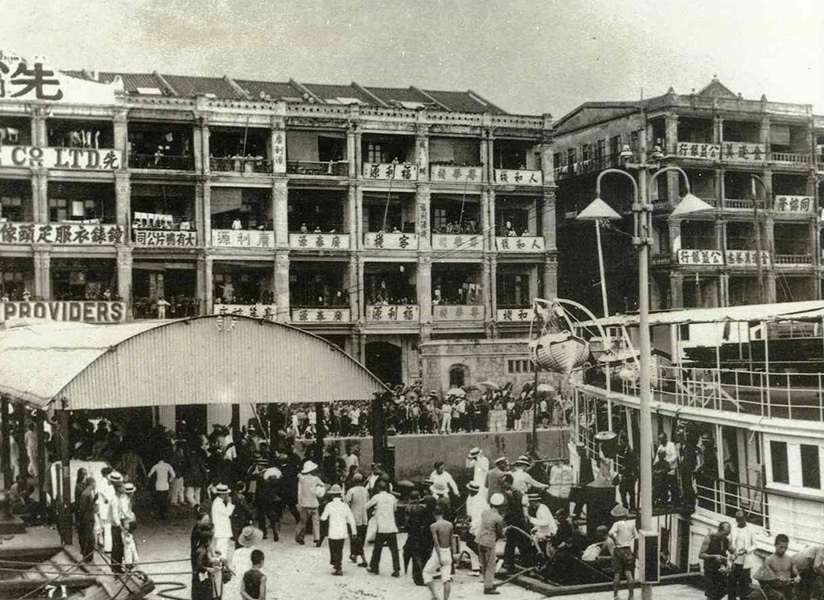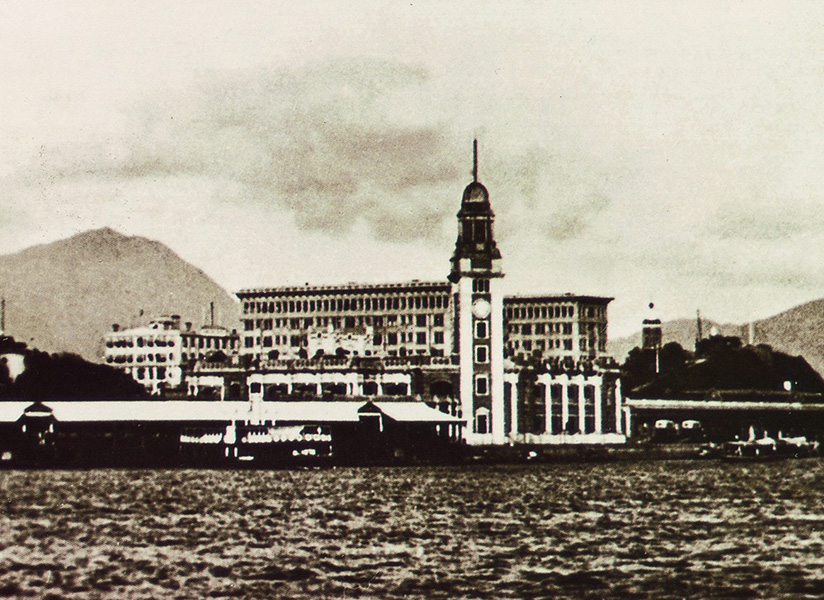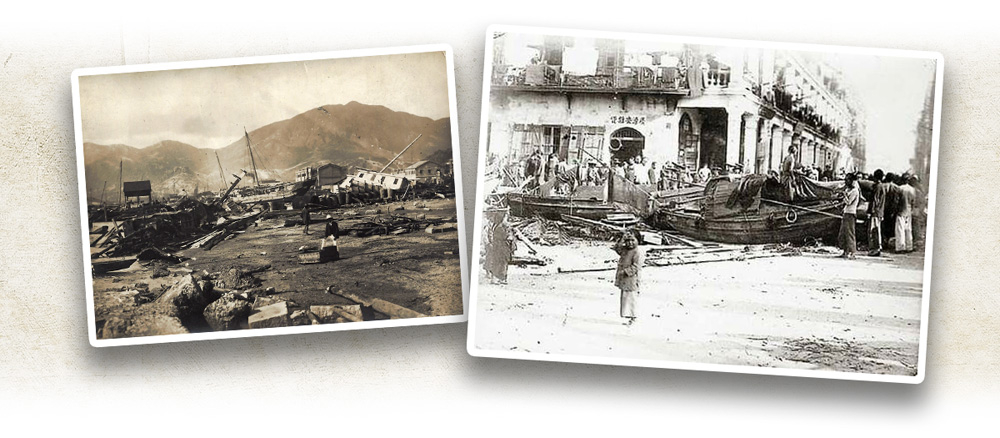The British forces landed on Hong Kong Island during the First Opium War in 1841. In 1860, the Qing government was defeated in the Second Opium War and Kowloon was ceded to Britain. This gave Britain complete control of Victoria Harbour, a deep-water harbour that can accommodate a number of ocean-going vessels. Under the free trade policy, merchants from different countries enjoyed free access to Hong Kong and zero-tariff policy doing business here. In light of booming industry in major capitalist countries in Europe and the U.S. after the Industrial Revolution, the opening of Suez Canal, and the operation of the Eurasian submarine cable, a surge of merchandise exporting from the West to the expansive China market through Hong Kong was witnessed. In addition, Chinese took up the majority of Hong Kong’s population. They were hard-working and good at doing business, which helped promote the economic development of Hong Kong. The city gradually became an important entrepots in the Far East because of these favourable conditions. According to statistics, in 1867, 20% of China’s total imports were from Hong Kong and 14% of China’s total exports were through Hong Kong. In 1880, 37% of the value of China’s imports and 21% of its exports were through Hong Kong.
|
|
Why did Hong Kong become an important entrepot of the Far East after it was established as a free port? |
|
|
See answer below. |
After Hong Kong was established as a free port, its economic activities were controlled by British merchants. Opium was the main merchandise at that time. The photo shows a British opium warehouse boat floating in the waters near Hong Kong.
The overseas-bound Chinese workers “coolie” in Hong Kong. Hong Kong was once a hub of coolie trade in early years. The gruelling coolie trade was associated with inhuman practices. However, it helped promote shipping and financial industry in Hong Kong.
The Chinese phrase kuli (苦力), meaning those who engage in hard labour, was the origin of the term “coolie trade”, a description used by Westerners to refer to businesses related to the recruitment and transportation of Chinese labourers. Even in present-day Hong Kong, the undertaking of gruelling labour is called being a guli (咕喱) in Cantonese, which is based on the words kuli and “coolie”.
The growing demand for labour from the expansion of capitalism in the West surged even further when gold was discovered in America and Australia in the mid-19th century. Meanwhile, many Chinese were forced to work in the Americas and Southeast Asia either for escaping poverty or being cheated or kidnapped during the late Qing era. The profiteering coolie trade was formed under these conditions. Most labour would receive a prepayment prior to leaving the country, although part of it was deducted by the middlemen who recruited them to pay for finders’ fees, ship passage, and other fees. The recruits were then at their handlers’ mercy and had no choice but to follow every order. They were treated much like livestock - the reason the coolie trade was also called the “pig trade” by Guangdong (廣東) locals.
In early years, Hong Kong was an important transfer station for the coolie trade, and most labour from southern China departed the country via Hong Kong. According to statistics, the number of coolies shipped to the Americas, Australia, and Southeast Asia between 1851 and 1872 reached 320,349. Many coolies lost their lives in foreign lands due to the terrible living and working conditions, and the harsh treatment. A great number died of disease while making the overseas voyage, and never arrived at their destinations. Ironically, this despicable coolie trade lined the pockets of its dealers.
Victoria Harbour during the 1870s (left) and 1880s (right). From the photos, a growth of economy can be concluded from the growing number of ships in the habour and buildings along the coast over the decade.
Left: Dent & Company (1858); Right: the waterfront west of Pedder Street in the 1870s. The buildings from left to right are Jardine, Matheson & Co., Hunter & Co., Lane, Crawford & Co., Union Insurance Society of Canton Limited and Douglas Lapraik & Co. Large British companies dominated the commercial activities in early Hong Kong.
The Standard Chartered Bank Building (left, building on the left) and the Hongkong and Shanghai Banking Corporation Limited (HSBC) Main Building (right) in early years. The two British banks started business in Hong Kong in 1859 and 1865 respectively.
The Hong Kong Government focused on increasing land supply in the 19th century. The photo shows the Central Reclamation on Hong Kong Island commenced in 1890 and completed in 1904.
The Sincere Department Store near Hong Kong-Macau Ferry Terminal in the early 20th century. The emergence of department stores showed that people’s purchasing power increased with the thriving Hong Kong society.
Utilities including water, electricity and transport developed rapidly between 1841 and the early 20th century in Hong Kong. The photos show the present-day Pok Fu Lam Reservoir completed in 1863 (left) and the North Point Power Station which started operation in 1919 (right).
The photo above was taken in 1933. It shows the Star Ferry Pier in Kowloon, the Kowloon Terminus, and the Terminus Clock Tower. Decades after Hong Kong became a free port, its land and water transport became more developed. The Star Ferry, the tram, and Kowloon-Canton Railway came into service in 1898, 1904, and 1910 respectively. (Photo source: Fotoe)
The development of Hong Kong as a free port met challenges, especially from natural disasters such as typhoons that threatened life and property. The photos show the aftermath of the terrible typhoon in 1906. More than 10,000 people lost their lives in this disaster.
|
|
Why did Hong Kong become an important entrepot of the Far East after it was established as a free port? |
|
|
The reasons are as follows: (1) Hong Kong, possessing a deep-water harbour, is located at a strategic location along the main transport route of South China. (2) Since its occupation of Hong Kong Island, Britain implemented the free port policy in Hong Kong which favoured business. (3) In light of booming industry in major capitalist countries in Europe and the U.S., the opening of Suez Canal, and the operation of the Eurasian submarine cable, a surge of merchandise exporting from the West to the expansive China market through Hong Kong was witnessed. (4) The Hong Kong Chinese were hard-working and good at doing business. |
Unless otherwise specified, the images in this material are provided by Professor Lau Chi-pang and Professor Liu Shuyong. Every effort has been made to trace the copyright holders and obtain permission to reproduce this material. Please do get in touch with any enquiries or any information relating to this image or the rights holder.




